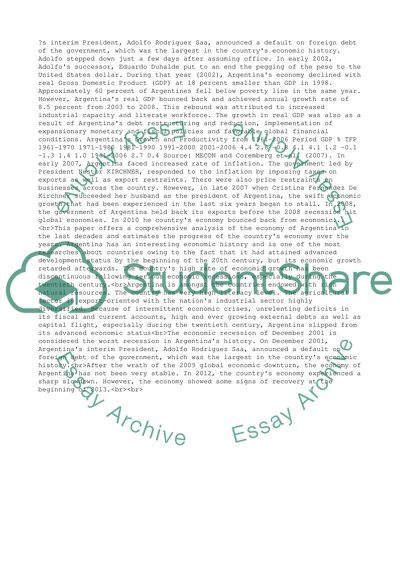Cite this document
(“An overview of Argentina`s Economy and the State of its Economic Research Paper”, n.d.)
An overview of Argentina`s Economy and the State of its Economic Research Paper. Retrieved from https://studentshare.org/business/1497844-an-overview-of-argentinas-economy-and-the-state-of-its-economic-progress
An overview of Argentina`s Economy and the State of its Economic Research Paper. Retrieved from https://studentshare.org/business/1497844-an-overview-of-argentinas-economy-and-the-state-of-its-economic-progress
(An Overview of Argentina`s Economy and the State of Its Economic Research Paper)
An Overview of Argentina`s Economy and the State of Its Economic Research Paper. https://studentshare.org/business/1497844-an-overview-of-argentinas-economy-and-the-state-of-its-economic-progress.
An Overview of Argentina`s Economy and the State of Its Economic Research Paper. https://studentshare.org/business/1497844-an-overview-of-argentinas-economy-and-the-state-of-its-economic-progress.
“An Overview of Argentina`s Economy and the State of Its Economic Research Paper”, n.d. https://studentshare.org/business/1497844-an-overview-of-argentinas-economy-and-the-state-of-its-economic-progress.


